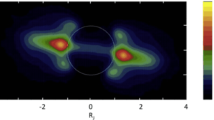Abstract
Radio wave operating in millimetrewave and microwave frequency bands are adversely affected due to rain. Particularly the attenuation is of immense significance for sensitive remote measurements by satellites using frequencies greater than 10 GHz. Maintenance of an uninterrupted communication link requires a precise knowledge of the attenuation effect due to rain for commissioning right kind of transmitting sources for various purposes required in present day situation. Precise measurement of attenuation at various frequencies will enable us to choose the right frequency, polarization, incident angle and power of the source for different purposes. In this paper we have compared the results of earlier works using aRb Olsen et al, (1) and the formulation by Moupfouma, (2) on the basis of theoretical analysis for explaining the observed results. Effect of temperature, considered in detail in this communication, has contributed the necessary correction factor of the rain attenuation for explaining the observed results. Theoretical analyses to measure the attenuation of the propagating wave due to temperature variation in the rain path have been presented. Correction factor due to temperature profile (temperature from the ground to the rain height within which the radio wave traces its path) has been incorporated in two models by using the concept of dipole energy changes. The effect of this temperature is noted to be quite significant and incorporates an error to the extent of 7–8%.
Similar content being viewed by others
References
D V Rogers and R L Olsen, CRC Report, 1299, 35, Communications Centre, Ottawa, 1976.
F Moupfouma, International Journal of Satellite Communications, 15, 89-99, 1997.
S A J Upton, B G Evans and A R Holt, Electronics Letters 15, 760-762, 1979.
R L Olsen, DV Rogers and DB Hodge, IEEE trans. Antennas AP-26, 318-329, 1978.
H C Van de Hulst, Wiley, New york, 1957.
N K Uzunoglu, B G Evans and A R Holt, Proc. IEE, 124 H(5), 417-424, 1977.
S K Sarkar, A Iqbal, M V S N Prasad, H N Dutta and B M Reddy, Indian Journal of Radio and Space Physics, 22, 369-373, 1993
N.C. Mondal, K.I. Timothy, A.B. Bhattacharya and S.K. Sarkar, Int. J. Remote Sensing, 18(17), 3669-3675, 1997.
CCIR, Report. No.564–3, International Telecommunication Union, Geneva, Switzerland, 1986.
W.L. Stutzman and W.K. Dishman, Radio Science, 17, 1465-1476, 1982.
N.C. Mondal, PhD thesis, University of Kalyani, 1997.
J S Marshall and McK Palmar, J. Meteorol. 5, 165-166, 1948
J O Laws and D A Parsons, Trans. Am. Geophys. Union, 24, 452-460, 1943.
G O Ajayi and R L Olsen, Radio Science, 20(2), 193-202, 1985.
Author information
Authors and Affiliations
Rights and permissions
About this article
Cite this article
Mali, P., Sarkar, S.K. & Bhattacharya, A.B. Temperature Effects on Attenuation Due to Rain for Millimeter and Centimeter Waves. International Journal of Infrared and Millimeter Waves 22, 153–171 (2001). https://doi.org/10.1023/A:1010726023476
Issue Date:
DOI: https://doi.org/10.1023/A:1010726023476




